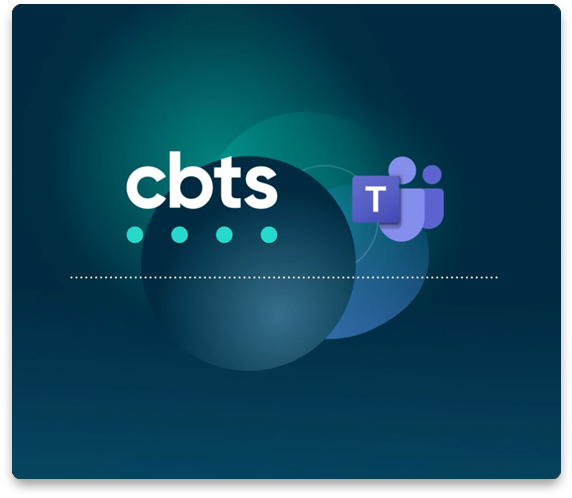
What is Infrastructure as a Service?
Scaling computing power up or down is a primary challenge for many companies. When the need for storage or networking services spikes, your organization may no longer meet customer demand if your hardware is not up to the task. Likewise, costly investments in hardware can lay unused once demand slopes downward. Infrastructure as a Service (IaaS) addresses these challenges and creates powerful benefits in numerous ways.
IaaS is one of the three primary forms of cloud computing models, which also include Platform as a Service (PaaS) and Software as a Service (SaaS). IaaS virtualizes technology traditionally associated with on-premises (on-prem) data centers, such as storage, servers, and networking. These services are delivered over the Internet via virtual machines in a pay-as-you-go cost model.
The IaaS approach has many benefits, but the most substantial advantage is that organizations no longer need to invest in new costly infrastructure to scale computing services. Instead, they simply scale up their subscription to the specific IaaS service that they need at that given time. In other words, IaaS shifts hardware spending from CapEx to OpEx.This post discusses the benefits of IaaS, how it works, and the potential drawbacks.
What are the benefits of IaaS?
- Scale on demand – Organizations rapidly expand or contract computing resources without investing in additional hardware.
- Cost efficient – IaaS customers pay only for the resources they use, promoting innovation and efficient IT resource management and making cloud services more affordable—even for small businesses.
- Boosts productivity – IT departments save time and money by relying on the cloud provider to set up and maintain the underlying physical infrastructure and can focus on more strategic activities.
- Speeds up time to market – Dev teams virtualized development environments with IaaS, instantly spinning up necessary infrastructure and speeding the time for new applications to reach the market.
- Reliability – IaaS offers high availability and resiliency with a global network that covers multiple geographies, creating redundancies for apps and services geographically closest to your users (which also reduces latency). Additionally, IaaS providers offer unlimited backup and disaster recovery infrastructure, allowing you to duplicate applications across multiple servers and automatically sync data backups.
Learn more: IT infrastructure modernization is transformational for organizations of all sizes
What is an example of Infrastructure as a Service?
An e-commerce organization sees exponentially more traffic around the holidays than the rest of the year. In the on-prem model, the online retailer may invest heavily in new servers to accommodate the extra traffic. The retailer’s IT team is responsible for buying and installing the new servers and managing any associated software or firmware. However, these servers lie dormant and unused for the rest of the year, wasting resources and IT dollars. In an IaaS model, the retailer simply purchases additional virtualized servers to accommodate the increased seasonal traffic and winds it back down after the holiday rush.
Other use cases to achieve the benefits of IaaS include:
- Rapid resource provisioning.
- Application development and testing.
- Enhanced disaster recovery and backup.
- Big data and scientific research analysis.
- Meeting network demand when traffic surges.
How does IaaS work?
In a nutshell, IaaS virtualizes infrastructure. Cloud service providers like Google or AWS host the physical servers, hardware, and network infrastructure at various cloud data centers across the globe. IaaS customers then “log in” to access this infrastructure from company laptops or devices. For the customer, everything runs as if connected to an in-house data center.
The three primary types of IaaS include:
- Compute resources: CPUs, GPUs, and RAM.
- Storage resources: block storage, file storage, and object storage.
- Networking resources: virtualized routers, switches, and load balancers.
In an IaaS model, the cloud provider maintains and manages these resources. As a customer, you benefit from accessing the latest hardware models, as it is in the provider’s best interest to upgrade their technology continuously. In IaaS, the customer is responsible for maintaining everything else, including applications, operating systems, middleware, and data. As with other cloud models, the provider and the customer are responsible for securing shared infrastructure.
Download this info sheet: Cloud-native application development embraces continual deployment and integration
What are the drawbacks of IaaS?
- Complex cost modeling – Since IaaS is a pay-as-you-go service (i.e., customers only pay for the services they need), overspending is a risk. IT teams must monitor their monthly spending closely and commit to a resource level to keep costs in line. Additionally, managed service consultants like CBTS can recommend cost-efficient modeling to avoid overspending.
- Vendor lock-in – After building virtual infrastructure with a particular platform, migrating to a different provider can be challenging. CBTS can help your team migrate to a new IaaS vendor or advise your team on avoiding vendor lock-in when joining a new infrastructure platform.
- Visibility and management – Many providers are not transparent in managing infrastructure, and without expert knowledge, customers may be too inexperienced or overwhelmed to manage IaaS.
- Shared security – It’s not always easy to make sense of the shared responsibility agreements that most cloud providers utilize. Your team needs to understand where the responsibilities lie or risk creating unintentional security vulnerabilities.
Working with a managed IaaS provider like CBTS addresses many of these issues.
Download the e-book to learn more about modern IT staffing challenges and solutions: Digital transformation demands a flexible staffing model
The differences between IaaS, PaaS, and SaaS
IaaS, PaaS, and SaaS are the three models of cloud computing. Each builds on the former to increase dependency on the cloud service provider for providing aspects of the technology stack. The three models fall on a spectrum of responsibility: on-prem data centers represent 100% customer responsibility for the technology stack, and SaaS represents 0% customer and 100% provider responsibility.
IaaS providers are responsible for servers, storage, networking, and virtualization (approximately 50% of the tech stack). At the same time, customers are still expected to provide and manage operating systems, middleware, runtime, data, and applications. PaaS builds on IaaS by having providers manage everything except applications and data. SaaS contains, controls, and delivers the complete tech stack. Examples of SaaS solutions include Salesforce or Google Workforce applications.
Who will benefit from IaaS?
Organizations that have relatively predictable workloads may see little benefit from IaaS. Companies well suited to virtualizing infrastructure include:
- Rapidly growing enterprises with demanding computing needs.
- Organizations with unpredictable spikes in network traffic.
- Organizations with too much unused on-prem infrastructure or hardware.
- Companies housing an overwhelming amount of data.
- Developers seeking to speed up the development cycle.
- Businesses experiencing issues with application performance.
- Enterprises hosting web applications.
CBTS as your managed IaaS provider
CBTS enables the transformative benefits of managed IaaS solutions, including design and deployment, network monitoring and management, managed infrastructure, managed database services, storage management, and security solutions.
Read more: Nine compelling benefits of a CBTS managed cloud environment
CBTS maintains high-level partnerships with industry-leading cloud service providers to offer insider advice to our clients. CBTS managed services allow businesses to focus on core competencies, while CBTS manages and monitors their IT infrastructure, providing the capabilities required to stay competitive in the digital economy.
Contact us to learn more about the benefits of IaaS for your organization.




















